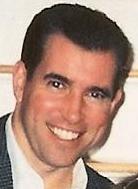- The Orbiting Clock Paradox: Should the Lorentzian View Be Preferred? (1999) [Updated 8 years ago]
- The Classical Newtonian Derivation of Lorentzian Equations for Sound and Other Media Processes (1999) [Updated 1 decade ago]
- The Hafele-Keating Contradiction (1997) [Updated 8 years ago]
- Can Relativity Predict and Open Rotational Sagnac Effect and not an Open Orbital Sagnac Effect Simultaneously? (1997) [Updated 8 years ago]
- The Ether as a Preferred Reference Frame (1997) [Updated 8 years ago]
- The Orbiting Clock Paradox: Should the Lorentzian View Be Preferred? (1999) [Updated 8 years ago]
Experiments confirm that a circling observer will see a stationary inertial clock in the center of the circle run fast. For large circles, one can always hypothesize the existence of a co-moving inertial "lab partner" who is co-located and essentially stationary with respect to the circling observer for some finite period of time. The circling observer must interpret that his observation of the rate of the center clock, as determined by the relativistic Doppler equation, show the center clock is running fast with respect to his stationary clocks. According to the special theory of relativity, the co-moving inertial "lab partner" of this circling observer must interpret that this same observation shows the center clock is running slow with respect to those same stationary clocks. The Lorentzian Relativity analysis of this orbiting clock
situation should be preferred to the Einsteinian explanation because it does not demand that co-located "lab partners" interpret the exact same observation in two different ways. - The Classical Newtonian Derivation of Lorentzian Equations for Sound and Other Media Processes (1999) [Updated 1 decade ago]
- The Hafele-Keating Contradiction (1997) [Updated 8 years ago]
The reference frame that Hafele-Keating used in their interpretation of their own time dilation experiment (1972) (1) leads to two problems regarding the special relativity theory. The first is that in their analysis, Hafele and Keating preferred a reference frame that has the same angular velocity as the earth in its orbit, and as Swift-Pellegrini pointed out in August '95 in the American Journal of Physics, "It is not true that special relativity can be applied if the angular velocity is small enough or the radius is large enough". (2) The second problem is that a (more) valid reference frame that they ignored (i.e., one that neither rotates nor orbits with the earth) predicts entirely different results. The common counter argument that reference frames that orbit in "free fall" are valid leads to still another difficulty, for Hafele-Keating (as well as the Global Positioning System experiments) also invalidated the reference frames of all free falling satellites around the earth.
- Can Relativity Predict and Open Rotational Sagnac Effect and not an Open Orbital Sagnac Effect Simultaneously? (1997) [Updated 8 years ago]
- The Ether as a Preferred Reference Frame (1997) [Updated 8 years ago]
Given all known experimental results, it is apparent that electromagnetic phenomena and muon decay within the vicinity of the earth's orbit appears to slow down as the velocity of their systems increases with respect to one very specific reference frame and no other. This reference frame orbits the sun at the velocity of the earth but does not spin with the earth.
Such a choice of reference frames is allowed in many theories, particularly theories involving a medium for light, but no such arbitrary preferences are allowed in the observer-based special theory of relativity.
On further inspection, it becomes clear that the positing of an ether that revolves with the earth in its orbit around the sun, but does not spin with the earth as it rotates on its axis leads to correct predictions for all electromagnetic and time dilation experiments. This theory would also point toward the likelihood of a whirling ether in the vast expanses between the galaxies, which in turn, would be consistent with the recent "surprising Nodland / Ralston results of the "corkscrew" effect on the polarization of light from distant galaxies.


